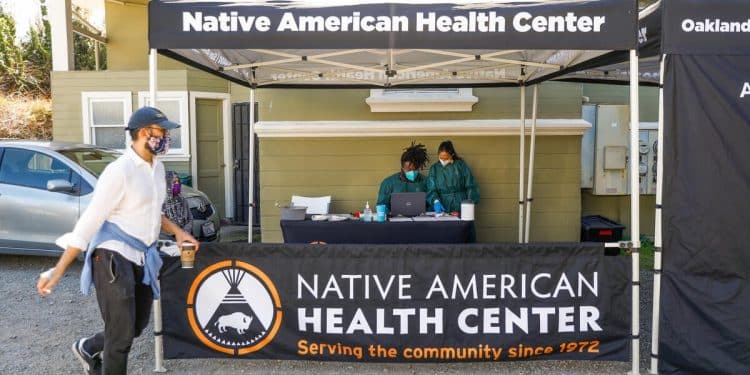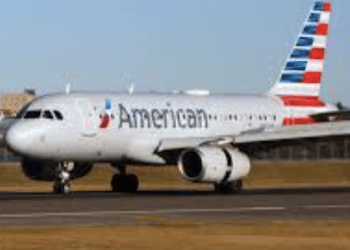Health centers serving Native American communities such as Oneida Community Health Center in Green Bay, Wisconsin are preparing for disaster.
This is because over 40% of the 15,000 patients served by the center are on Medicaid. Debra Danforth is the director of Oneida Comprehensive Health Division, a citizen of Oneida Nation, and said that cuts to the program will be detrimental to both the patients and facility.
She said, “It’d be a huge hit.”
The facility offers a variety of services for the majority of Oneida Nation’s 17,000 residents, including ambulatory health care, internal medicine and family practice. Danforth stated that the tribe is only one of two tribes in Wisconsin to have an “open door policy,” which means that members of any federally-recognized tribe are welcome at the facility.
Danforth, along with many tribal health officials, says that Medicaid cuts will cause service reductions in health facilities serving Native Americans.
Indian Country and Medicaid have a special relationship because Medicaid helps tribes to cover funding shortages that are chronically experienced by the Indian Health Service (the federal agency in charge of providing health care for Native Americans).
Medicaid has contributed to about two-thirds third-party revenue generated by tribal health providers. This creates financial stability for the facilities and helps them pay for operational costs. <a href="https://www.cms.gov/training-education/partner-outreach-resources/american-indian-alaska-native/medicaid-indian-health#:~:text=More%20than%20one%20million%20AI,and%20property%20in%20determining%20eligibility." More than one million Native Americans who are enrolled in Medicaid, or the Children's Health Insurance Program (which is closely related), rely on this insurance to pay for medical care outside tribal health facilities. Tribal leaders have called on Congress to exempt tribal health care from budget cuts, and they are prepared to fight for their access.
“Medicaid is a way that the federal government fulfills its trust and treaty obligation to provide us with health care,” said Liz Malerba. She is the director of policy and legislation affairs at the United South and Eastern Tribes Sovereignty Protection Fund. This nonprofit advocacy group represents 33 tribes from Texas to Maine. Malerba belongs to the Mohegan Tribe.
She said, “We view any interruption or reduction in Medicaid as an abrogation” of this responsibility.
Tribes are faced with a difficult task of providing care to an American population who suffers from severe health disparities and a high rate of chronic illnesses. In western states at least, the life-expectancy is only 64 years, the lowest among any U.S. demographic group. In recent years, tribes have increased access to health care by adding providers and services, aided in part by Medicaid reimbursements.
Lisa James, Director of Development for the Montana Consortium for Urban Indian Health , stated that five urban Indian organizations had seen funding increase of almost $3 million in the past two fiscal years. This was during a February webinar organized by the Georgetown University Center for Children and Families and National Council of Urban Indian Health.
James stated that the increased revenue allowed clinics to offer services previously unavailable unless they were referred, such as behavioral health services. The clinics also expanded their operating hours and personnel.
Montana’s five Indian urban clinics in Missoula and Helena serve more than 30,000 people. This includes some non-Native Americans or tribe members. These clinics offer a variety of services including primary care and dental care. They also provide health education and prevention, as well as substance abuse prevention.
James said that Medicaid cuts in Montana would force urban Indian health care organizations to reduce services and their ability to combat health disparities.
American Indian and Alaska Native people under age 65 are more likely to be uninsured than White people under 65, but 30% rely on Medicaid compared with 15% of their White counterparts, according to <a href="https://www.kff.org/racial-equity-and-health-policy/issue-brief/health-coverage-among-american-indian-and-alaska-native-and-native-hawaiian-and-other-pacific-islander-people/#:~:text=Three%20in%20ten%20(30%25),15%25%20of%20their%20White%20counterparts." KFF data from 2017 to 2021. More than 40 percent of American Indians and Alaska Natives children are enrolled with Medicaid or CHIP. This provides health insurance for kids whose parents are not Medicaid-eligible. KFF Health News is part of KFF, a nonprofit health information organization.
According to a Georgetown Center for Children and Families January report, the percentage of Medicaid-eligible residents was higher in counties where there were significant Native American populations. In small-town and rural counties, the proportion of Medicaid recipients was higher in counties with a large Native American population. Around 50% of the children living in these Native areas are enrolled in Medicaid.
Tribes have already been exempted from President Trump’s executive order. Sean Keveney, acting general counsel at the Department of Health and Human Services, clarified in late February that tribal health programs would not be affected if an order to terminate diversity, equity and inclusion government programs was passed, but that Indian Health Service hiring practices established under an Obama-era regulation are expected to be discontinued.
Robert F. Kennedy Jr., HHS secretary Robert F. Kennedy Jr., also reversed the layoffs in February of over 900 IHS workers just hours after receiving termination notices. Kennedy said during his Senate confirmation hearings that he would name a Native American to be an assistant HHS Secretary. In December, the National Indian Health Board (a Washington-based nonprofit that advocates on behalf of tribes) endorsed elevating director of Indian Health Service as assistant secretary of HHS.
Jessica Schubel is a senior official in the health care department of former president Joe Biden’s White House. She said that exemptions will not be sufficient.
She said that just because Native Americans were exempt, it didn’t mean they wouldn’t be affected by the cuts made to the rest of program.
State leaders are also calling for federal Medicaid expenditure to be spared, because cutting the program would shift cost onto their budgets. State lawmakers will have to make decisions about whether to reduce Medicaid rolls or change eligibility criteria without federal funding. This can cover up to 70% of the costs.
Tribal leaders have noted that while state governments are not responsible to them in the same way as the federal government, they still face vast differences depending on the state program they use when interacting with Medicaid.
In an interview with Fox News, Mr. Trump made contradictory statements regarding Medicaid cuts. He said that Medicaid and Medicare would not be touched. In the same week on social media, Mr. Trump showed his support for a House Budget Resolution that likely would require Medicaid cuts.
The House budget plan, approved by the House in late February, calls for lawmakers to reduce spending to offset tax incentives. The House Committee on Energy and Commerce oversees Medicaid and Medicare spending. It is ordered to cut $880 billion in the next decade. The possibility of cutting the program, which, along with CHIP, offers insurance to over 79 million people, has attracted opposition by national and state organizations.
The federal government reimburses IHS and tribal health facilities <a href="https://www.cms.gov/training-education/partner-outreach-resources/american-indian-alaska-native/ltss-ta-center/information/ltss-financing/100-fmap-ltss-educate-your-state#:~:text=In%20all%20states%2C%20eligible%20services,%2C%20not%20at%20100%25%20FMAP." The federal government reimburses IHS and tribal health facilities a href="https://www.cms.gov/training-education/partner-outreach/resources/american-indian/alaskanative/ltsstacenter/information/ltssfinancing/100%20FMAP%20ltsseducateyourstate#::text=In%20all%20states%2C%20eligible%20not%20not%20not%20not%20not%20not%20not%20not%20not%20not%20at%20not%20not%20not%20not%20not%20not%20not%20not%20not%20Not%20not%20not%20not%20not%20not%20not%20not%2C%20not%20not%2C%2C%20%20%25%%20at%%%2020100%25%%20FMAP%%20%%20FMAP
Tribal leaders say that Medicaid, which is a temporary fix for Native American healthcare programs, will not be replaced by more money. Instead they’ll have to operate with less.
Winn Davis is the congressional relations director of the National Indian Health Board. She said that Medicaid funds make up between 30 and 60% of a facility’s budget. This is a difficult gap to fill.
Davis said that Congress does not have to consult with tribes as part of the budgeting process. Tribes can only engage in implementation after the Centers for Medicare & Medicaid Services (CMS) and state agencies have made changes.
The federal government’s spending on funding Native American health care is much lower than Medicaid. IHS estimated billing Medicaid $1.3 billion in this fiscal year. This represents less than 1% of the total federal Medicaid spending.
Malerba, speaking of the Medicaid-covered services in tribal health care, said that “we are saving more life.” It brings us closer towards a 21st-century level of care we all should have but don’t.
KFF Health News, a national newsroom, produces in-depth reporting about health issues. It is also one of KFF’s core programs, which includes health policy research and polling as well as journalism.








